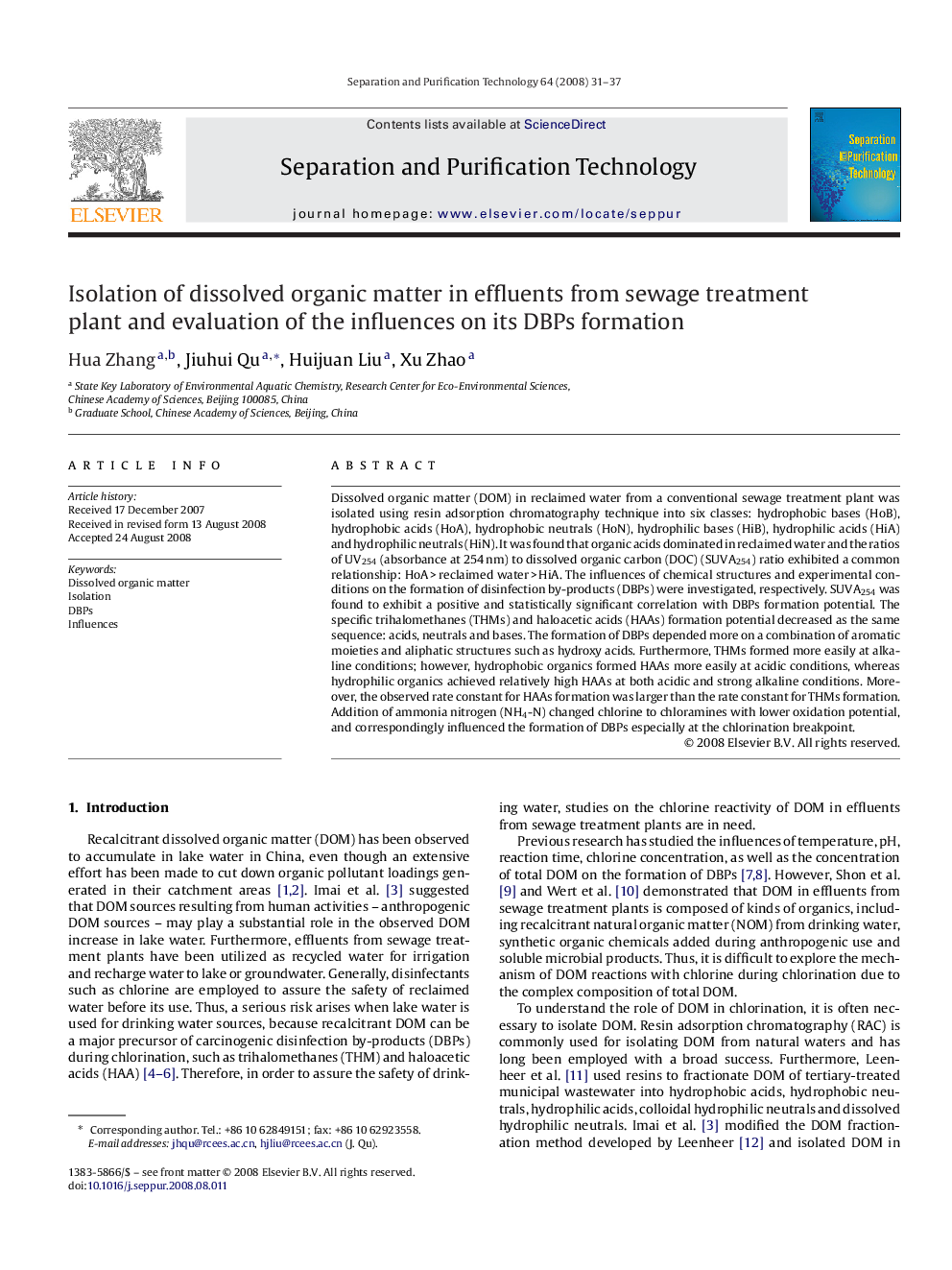| کد مقاله | کد نشریه | سال انتشار | مقاله انگلیسی | نسخه تمام متن |
|---|---|---|---|---|
| 643811 | 884391 | 2008 | 7 صفحه PDF | دانلود رایگان |

Dissolved organic matter (DOM) in reclaimed water from a conventional sewage treatment plant was isolated using resin adsorption chromatography technique into six classes: hydrophobic bases (HoB), hydrophobic acids (HoA), hydrophobic neutrals (HoN), hydrophilic bases (HiB), hydrophilic acids (HiA) and hydrophilic neutrals (HiN). It was found that organic acids dominated in reclaimed water and the ratios of UV254 (absorbance at 254 nm) to dissolved organic carbon (DOC) (SUVA254) ratio exhibited a common relationship: HoA > reclaimed water > HiA. The influences of chemical structures and experimental conditions on the formation of disinfection by-products (DBPs) were investigated, respectively. SUVA254 was found to exhibit a positive and statistically significant correlation with DBPs formation potential. The specific trihalomethanes (THMs) and haloacetic acids (HAAs) formation potential decreased as the same sequence: acids, neutrals and bases. The formation of DBPs depended more on a combination of aromatic moieties and aliphatic structures such as hydroxy acids. Furthermore, THMs formed more easily at alkaline conditions; however, hydrophobic organics formed HAAs more easily at acidic conditions, whereas hydrophilic organics achieved relatively high HAAs at both acidic and strong alkaline conditions. Moreover, the observed rate constant for HAAs formation was larger than the rate constant for THMs formation. Addition of ammonia nitrogen (NH4-N) changed chlorine to chloramines with lower oxidation potential, and correspondingly influenced the formation of DBPs especially at the chlorination breakpoint.
Journal: Separation and Purification Technology - Volume 64, Issue 1, 20 November 2008, Pages 31–37